WC vs History: The Evil "I" - Part Two



The first American ship to bear the name Intrepid was, interestingly enough, also a captured French ship. Instead of a ship of the line however, it was a four-gunned ketch. Built by the French in 1798 and later sold to Tripoli, it was captured by Lt. Stephen Decatur on 23 December 1803. The name Intrepid was to enter naval history on 16 February 1804 when Lt. Stephen Decatur led 60 men aboard the grounded frigate USS Philadelphia in Tripoli and set it ablaze. Admiral Horatio Nelson called the action, "the most bold and daring act of the age." However, her time in American service was to be short-lived. In late August 1804, Intrepid was transformed into a fireship with the loading of 100 barrels of gunpowder and 150 shells. Manned by thirteen men, the ship was sent on its mission early in the evening of 4 September. Its target was the Tripolian fleet moored near the walls. Tragedy struck when the ship exploded before it had been placed into position, killing everyone on board. What happened is unclear.
The next American vessel was an experiment ship. Commissioned in July 1874 as a steam-powered torpedo ram, Intrepid was the world’s first ship armed with self-propelled torpedoes. During her trials, the ship’s design was found to be unsatisfactory in a number of ways. After only three months of service Intrepid was decommissioned in the New York Navy Yard on 30 October 1874. While the original design proved to be a failure the cash-strapped Navy looked for way to put the hull to use. The decision was made to convert her to a light-draft gunboat for service in the Far East. However, soon after work began it slowed down and eventually stopped altogether. The hull sat for years until 1892 when it was sold to a private party and later broken up for scrap.
The third American vessel was steel-hulled bark used for training. Commissioned in 1907, she served out of San Francisco until 1912 when she became a receiving ship. She was eventually decommissioned in 1915 and laid up in ordinary until 1921. Intrepid was converted for commercial service as a dredging ship with the Hawaiian Dredging Company. The ship was later reacquired by the US Navy as a dredging barge during the Second World War and took part in the salvage of the USS Oklahoma. At the end of the war the ship was returned to commercial service but was wrecked off the northern beach of the Columbia River in 1954 while being towed to Portland, Oregon. Her remains are still visible today along the shore.
The final American ship to bear the name Intrepid was an Essex-class carrier built during the Second World War. CV-11, nicknamed the “Fighting I” although many referred to her as the “Dry I” given her often bad luck and time spent in dry dock for repairs.
Intrepid was the third Essex carrier commissioned. Joining the Pacific Fleet in January 1944, Intrepid earned one of the most distinguished service records of the war. Her career began the same month with the invasion of the Marshall Islands where her planes raided Kwajalein atoll. In February, she raided the vaunted Japanese base at Truk as part of Operation Hailstone. After laying waste the Japanese installations there, Intrepid suffered a torpedo hit during a Japanese nighttime raid. She was out of action until June 1944 when she rejoined the fleet following the Battle of the Philippine Sea. Intrepid provided support for the invasion of Peleliu in September 1944. The following month, Intrepid operated as part of Halsey’s Third Fleet during the Battle of Leyte Gulf. Her aircraft attacked Admiral Kurita’s Center Force in the Battle of the Sibuyan Sea helping sink the battleship Musashi. The next day, 25 October, Intrepid’s planes took part in the Battle of Cape Engano. One of her aircraft put a bomb into the light carrier Zuiho and might have scored a torpedo hit on the last of the Pearl Harbor raiding carriers, Zuikaku.
Less than week later, on 30 October, Intrepid was hit by a kamikaze which briefly knocked out her flight deck. This was the first of several kamikaze strikes the ship suffered over the remainder of the war. In November, two kamikazes struck the carrier within five minutes of each other. She was out of the war for a second time and did not return until March 1945. During the invasion of Okinawa in April, she suffered another kamikaze hit. She returned to the West Coast for repairs. Intrepid returned to war for the last time in August 1945. On 6 August 1945 her planes bombed long since bypassed Wake Island for her final action of the war. She later arrived at Eniwetok where on 15 August she received the stand down order. Her war was over.
Put into mothballs for six years, in 1952 the order went out modernize the ship into an attack carrier. Her designation became CVA-11. Four years later she went in for a second modernization where she received an angled flight deck. For the next six years, Intrepid deployed with the Atlantic and Mediterranean Fleets on multiple occasions.
Twice Intrepid recovered American astronauts. Scott Carpenter, flying Aurora 7 of Project Mercury, was recovered in May 1962. Three years later, the two astronauts of Gemini 3 were recovered. Several months after the recovery, Intrepid went in for last modernization. She rejoined the Fleet in 1966. From April 1966 to February 1969, Intrepid completed three deployments to Vietnam. Following her service there, the ship was home ported in Rhode Island where she participated in several NATO exercise. In 1972 she was decommissioned permanently. For four years she was moored at the Philadelphia Navy Yard where the original intent had been to scrap her. A campaign was launched to turn Intrepid into a museum ship. In August 1982, she was opened as the Intrepid Sea-Air-Space Museum on New York City’s Pier 86. She has been a popular destination ever since. In 2006, the ship underwent renovations. During the attempt to remove Intrepid from Pier 86 it was discovered the ship was stuck in 24 years of mud! After a massive dredging operation the ship was pulled free in December 2006. Two years and $60 million worth of renovations made her ready to continue the role as an incredible museum. She returned to her home base at Pier 86 in November 2008.
Intrepid was chosen as the display location for the space shuttle Enterprise in 2011. The space shuttle went on public display in July 2012. Enterprise joined an impressive collection of air and space craft and naval vessels at the museum including the first production of the Lockheed A-12, a TBM Avenger, a British Concorde, a replica of the Mercury Aurora 7 capsule and numerous others.

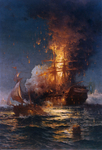
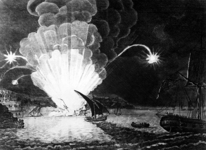

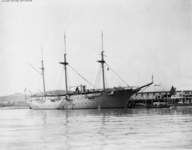

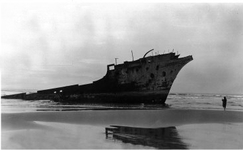
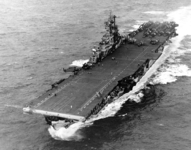
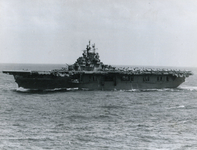
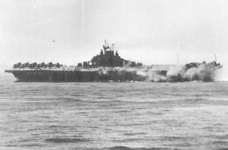
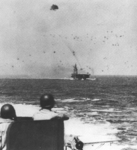
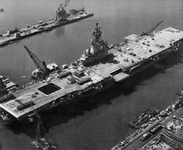
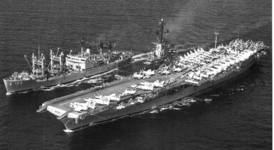
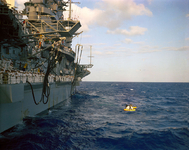
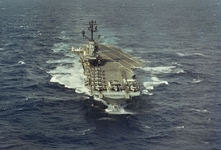


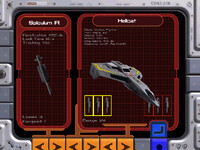


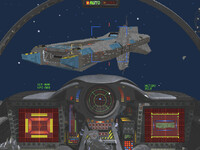

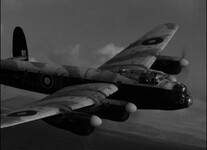
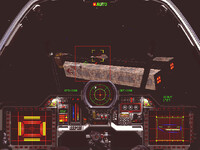


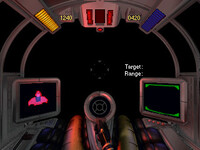

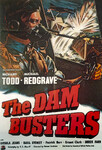
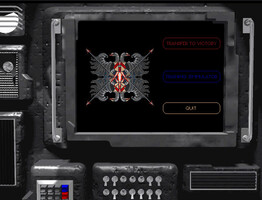
Follow or Contact Us